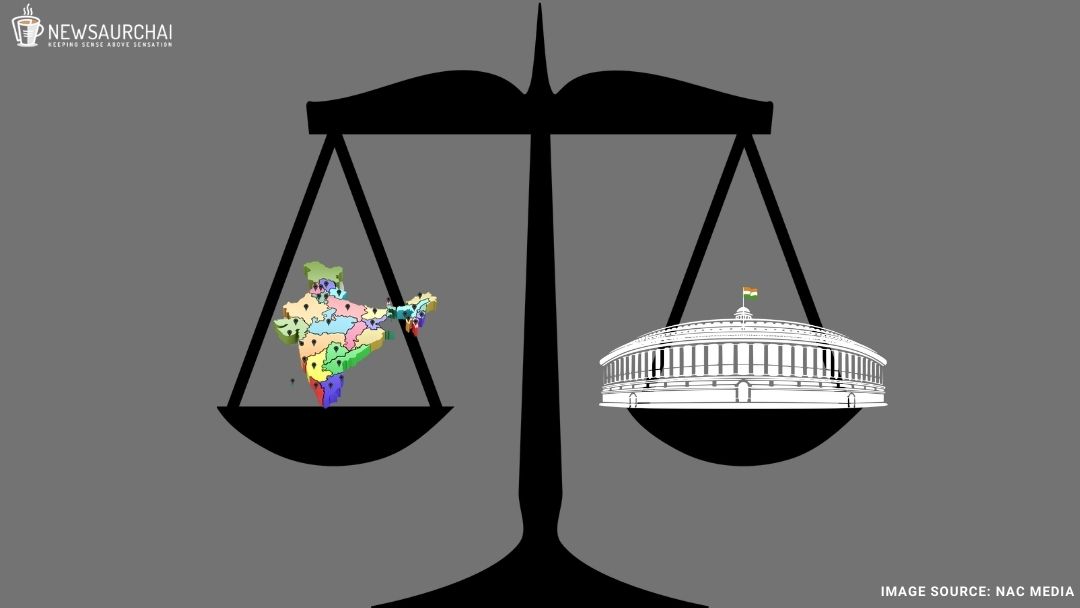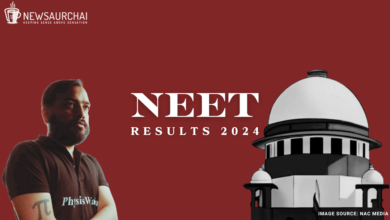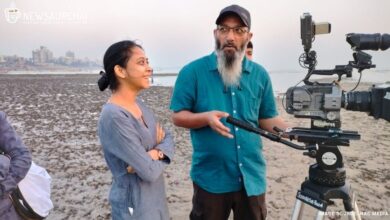
The second wave of Covid-19 has hit India hard. Yesterday, on 19 April 2021, India registered 2,56,828 new cases, reported 1,54,234 recoveries and 1,757 fatalities. India currently has over 15 million cases. The death toll is over 180,000.
This sudden rise in cases led to a battle of political blame game between political parties. Allegations and counter-allegations are being leveled daily. The vaccine, the elections, the Kumbh Mela have been blamed for the spread of cases. The farmer protests, the rallies against Yati Narsinghanand are sighted by the supporters of the government as a reason.
The political blame game diluted the response of the states and Centre towards the Covid-19 pandemic.
What Happened?
The second wave of the pandemic proved to be much more deadly than the second wave. This exposed the lack of capacity building of healthcare infrastructure over the last year. Healthcare is a state subject. The state governments did not abide by their mandate to improve infrastructure in their states.
They made use of the makeshift facilities built during the first wave. Governments did not build up capacity for the future despite experts citing the learnings from the Spanish flu. The experts predicted multiples waves of the pandemic. This lack of foresight led to a shortage of hospital beds, racketeering and hoarding of medicines, and a lack of oxygen for treatment.
What Did The Opposition Say?
The Opposition has shifted goalposts during the vaccination. Led by Rahul Gandhi, the Opposition questions the government on the topic of vaccinating Indian citizens. They changed their tune after the government announced the rollout of the vaccine.
Samajwadi Party leader Akhilesh Yadav said he would not take the vaccine terming it a ‘BJP vaccine’. Congress spokesperson Salman Niazi called it ‘a fraud.’ Senior Congress leader Rashid Alvi supported Akhilesh Yadav stating the vaccine could be misused as the government misuses investigative agencies.
The Bengal elections are now blamed for the massive spike in the number of cases. The Shiv Sena targeted the Election Commission of India (ECI) and the political rallies in Bengal. It said the virus spread more rapidly across from the states where elections were held or are underway.
Shiv Sena questioned Health Minister Harsh Vardhan for blaming the Maharashtra government over its handling of the pandemic. Criticizing the minister it said, “He has nothing to speak over the pandemic situation in BJP-ruled states like Uttar Pradesh, Gujarat, and Madhya Pradesh.”
What Are The States Doing?
Corruption and shortage are common factors among states in the second wave of the pandemic. All states are suffering from a shortage of beds and oxygen supply. The drug remdesivir is racketed by scrupulous elements across states. The commonality ends here. Certain states have resorted to blaming the central government for their mismanagement. There is a suspicion of fudging data in government-ruled states.
Maharashtra
Maharashtra is the most affected state in the first and the second wave. Activities in Maharashtra are responsible for the increase in cases of Gujarat and Rajasthan.
A negative RT-PCR test is required for travel. It is part of the Covid-19 travel protocol to ensure a passenger is not a health risk. Travel operators in Maharashtra provided fudged negative test reports for ₨ 500. The Mumbai police booked 38 people for traveling with fake negative RT-PCR test reports.
Corruption by the officials at the airport on duty for screening passengers for the virus led to an increase in cases. The civic officials of the urban local body in Mumbai let passengers go without the mandatory 7-day institutional quarantine for ₨ 10,000- ₨ 12,000. The quarantine was put in place for passengers arriving from the United Kingdom, Middle East, and South Africa.
Racketeering of drugs used to treat the virus is happening on a large scale. Police have arrested people from Nagpur, Pimpri Chinchwad, and Mumbai for racketeering remdesivir.
Telangana
The government data in Telangana does not present a grim picture. There is speculation that the government is massively underreporting the figures. The last update by the government reported 5900 cases and 18 deaths in the state.
Hearing a batch of public interest litigation seeking direction to control the spread of the pandemic, the High Court chided the government over its decision to open commercial activities, malls, cinema halls, pubs, and congregations without imposing Covid-19 restrictions.
The High Court called the affidavit filed by the government in response to the PILs wishy-washy and disappointing. A bench of Chief Justice Hima Kohli and Justice B.Vijaysen Reddy said “We are very unhappy with your affidavit as it does not contain any of the details to check footfall in cinema halls and other public places?”
This has led to the imposition of self-restriction by a few associations and villages. The Hyderabad Kirana Merchant Association on 10 April, urged grocery shops in the famed Begum Bazar area to shut down by 5 pm. This is a preventive measure taken by the association to prevent the spread of the virus. It is reported there are around 300 cases in the area.
While authorities are trying to control the movement of people across borders through dirt roads, villages bordering the state of Maharashtra have self-imposed lockdowns in their area.
Delhi
The capital city-state of Delhi reported a higher number of cases throughout the pandemic. In the first wave, military facilities in the NCR region were converted to Covid-19 centers. The Delhi government did not make use of its famed mohalla clinics.
The Supreme Court censured the Delhi government over its handling of dead bodies during bodies and termed the situation as ‘horrific’. The bench comprising of Justices Ashok Bhushan, S K Kaul, and M R Shah said, “Very sorry state of affairs in Delhi and inside its hospitals. Look at the treatment meted out to patients. The patients are crying and no one is looking after them. Relatives are not even informed, as reported by media, after the death of patients.”
An RTI application filed by Mr. Tejpal Singh corroborates this. Arvind Kejriwal came to power with the promise of making Delhi a social welfare state. He promised to build many hospitals and claimed credit for building them. However, in the reply to the RTI application filed Mr. Singh states that no new hospital was commissioned from April 2015 to 31 March 2019.
Every time the situation could not be controlled by the Delhi Government, the Ministry of Home Affairs had to step in. The Home Minister Amit Shah and his team ensured the Covid-19 cases brought in control. The Delhi Government has not learned from its past mistakes and is repeating the same mistake.
Punjab
The state of Punjab registered the highest number of cases this week. It has been the center of protests since November last year. The Punjab government actively supported the super spreader events of the large-scale gatherings by the farmer unions.
While the number of cases in the state of Punjab is lower compared to other states, its tacit support to farmers at the Delhi border became a super-spreader in the adjoining areas. The Punjab government failed to make use of the ventilators supplied to the state under the PM CARES fund. 250 ventilators provided by the government lie unused in warehouses in Punjab.
The farm unions led by Bharatiya Kisan Union (BKU) are going to lead a protest march from Punjab to Delhi in the middle of the second wave. There is no indication that the Punjab government would prohibit them citing the current health risk in the country.
In a similar case, the state of Jharkhand has not utilized 60 ventilators sent under the PM CARES fund. The state government demanded more ventilators without utilizing the existing ones.
In the states of Gujarat, Uttar Pradesh, and Madhya Pradesh there are rows of bodies cremated at crematoriums. The number of bodies being cremated does not match the data released by the state government.
The government of Uttar Pradesh has denied allegations of underreporting of cases. However, it ordered extra quantities of wood to meet the supply side of demand for the cremation of bodies in the coming days.
A similar played out in the state of Gujarat. In a statement by a president of a trust operating a crematorium in Surat, Mr. Kamlesh Sailor stated the reality of the situation. “Earlier 15 to 20 bodies were coming in a day and now around 80 to 100 dead bodies are coming daily.”
The Way Forward
The government has allowed vaccination for everyone above 18 from May 1. It allowed the manufacturers of vaccinations to supply 50 percent of produced to states on the free market. The state governments can decide the dosage required to vaccinate the population in their state.
The pharmaceutical company, Bharat Biotech has announced it has procured raw materials to produce 700 million doses per year. This should scale up the production of vaccinations.
It is up to the state governments now to co-operate with the industry to meet their requirements. Or will they continue to play politics?





